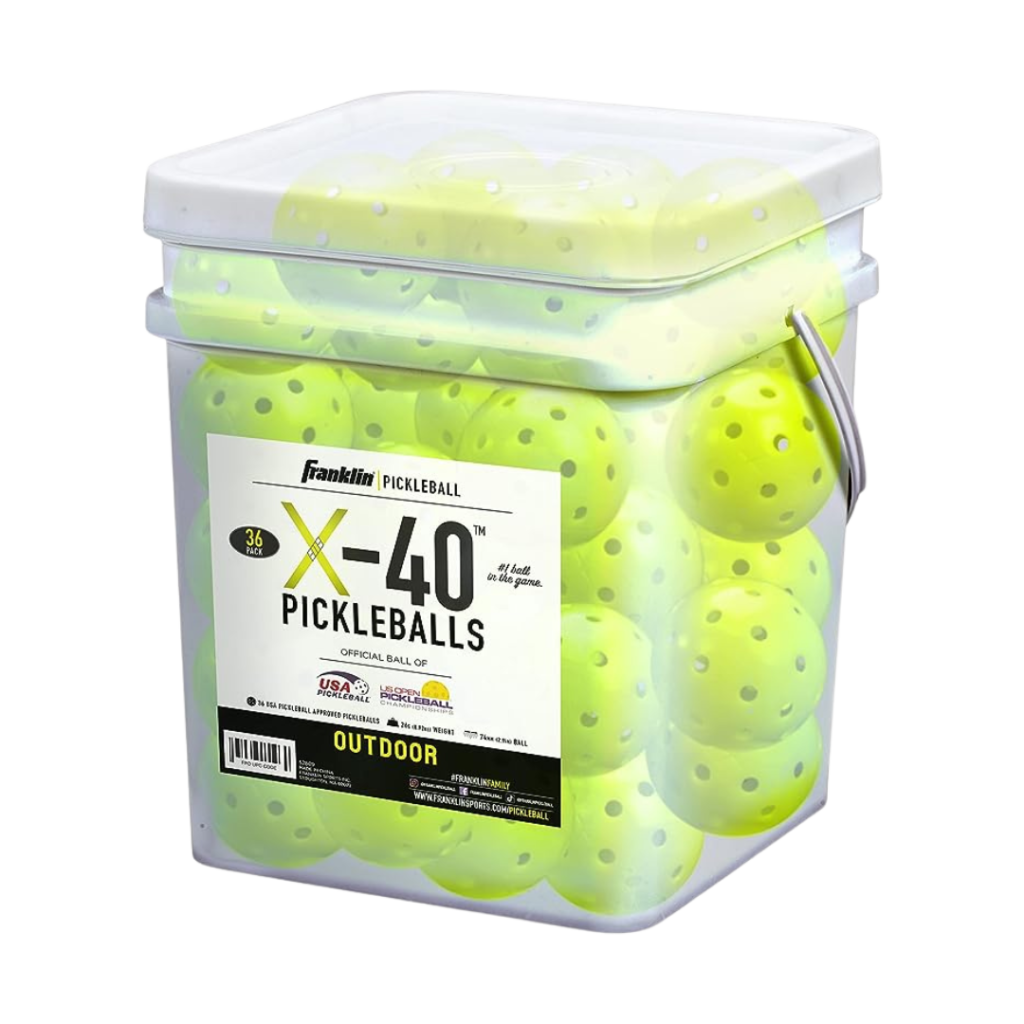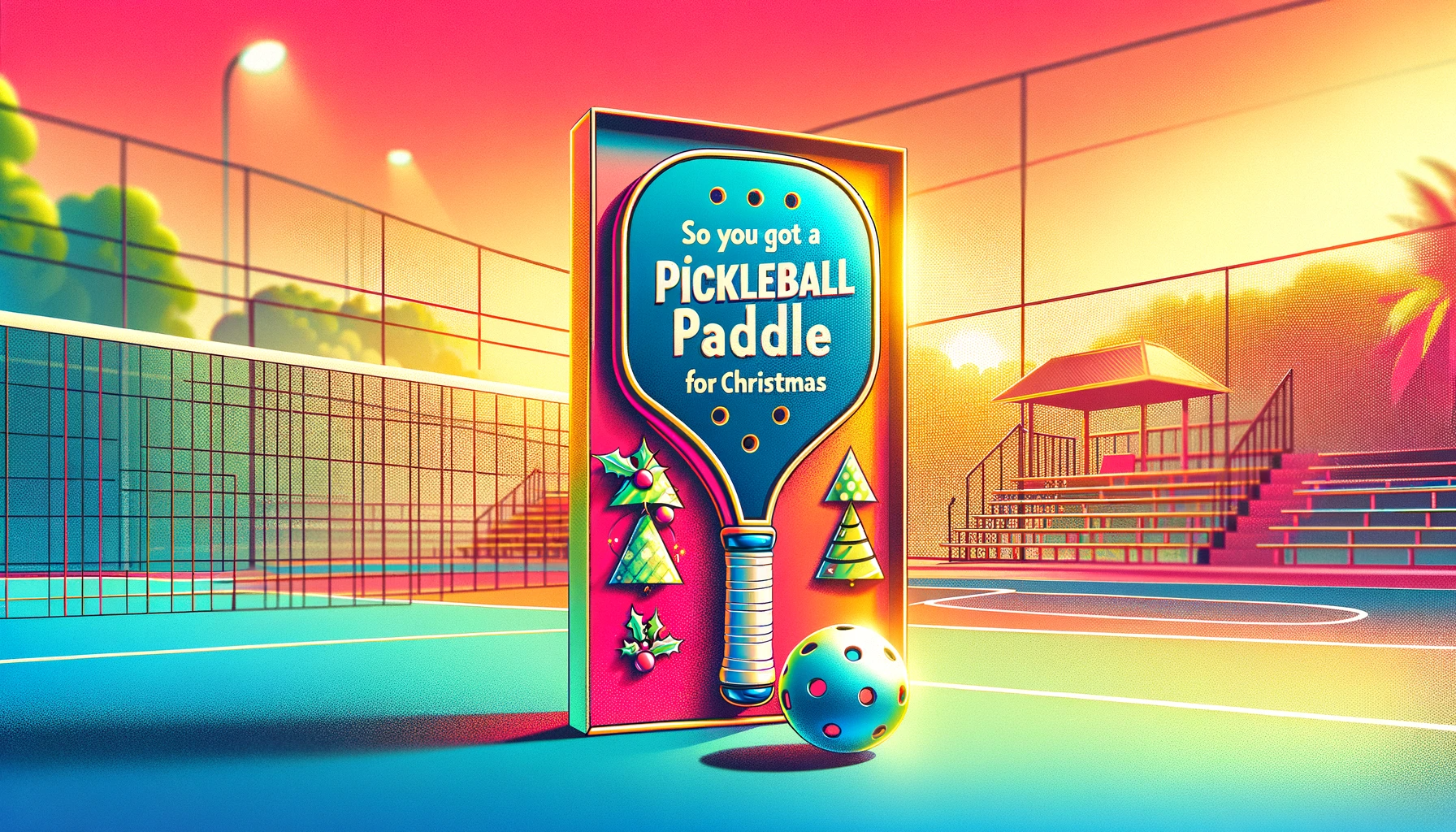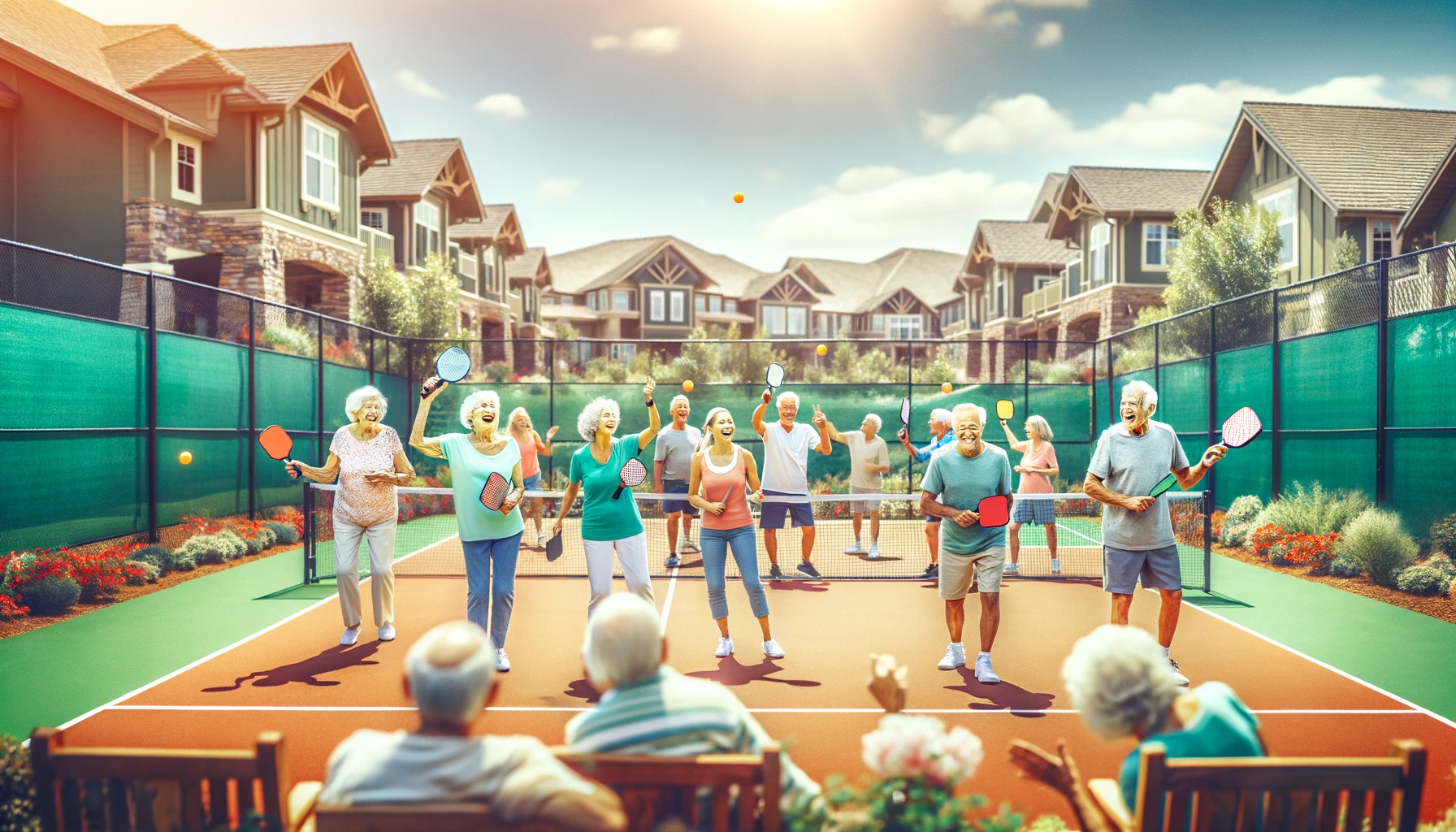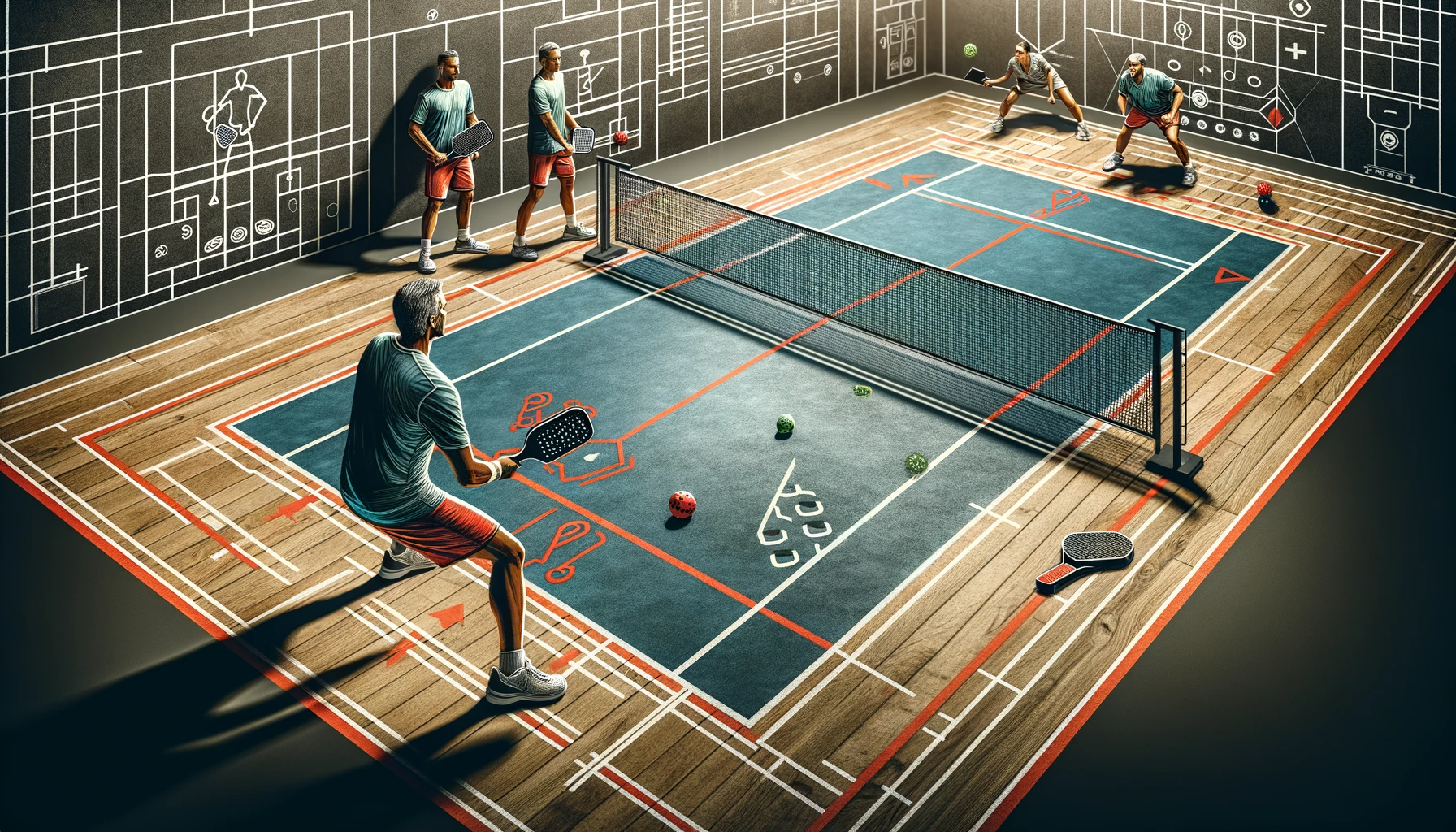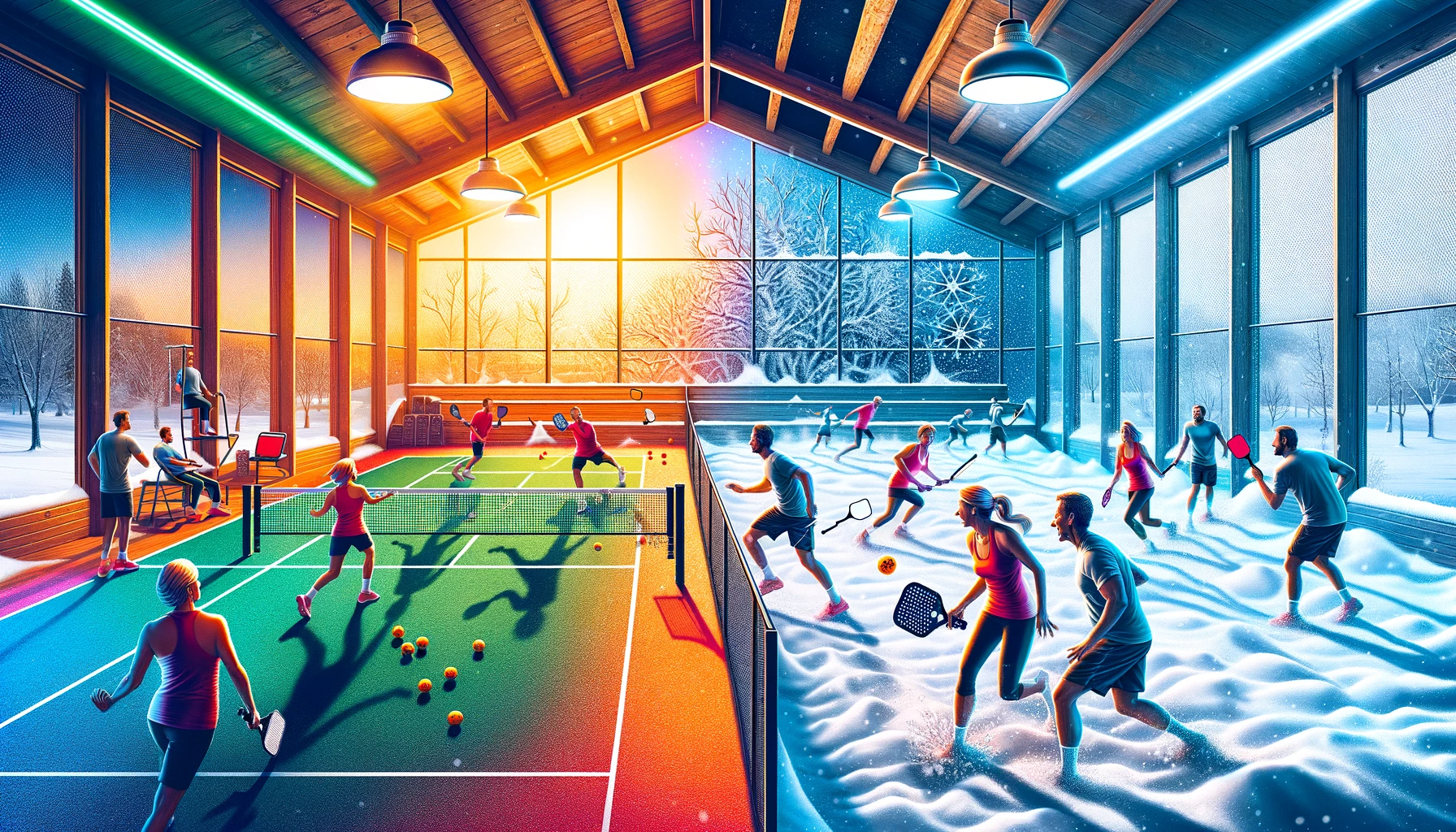
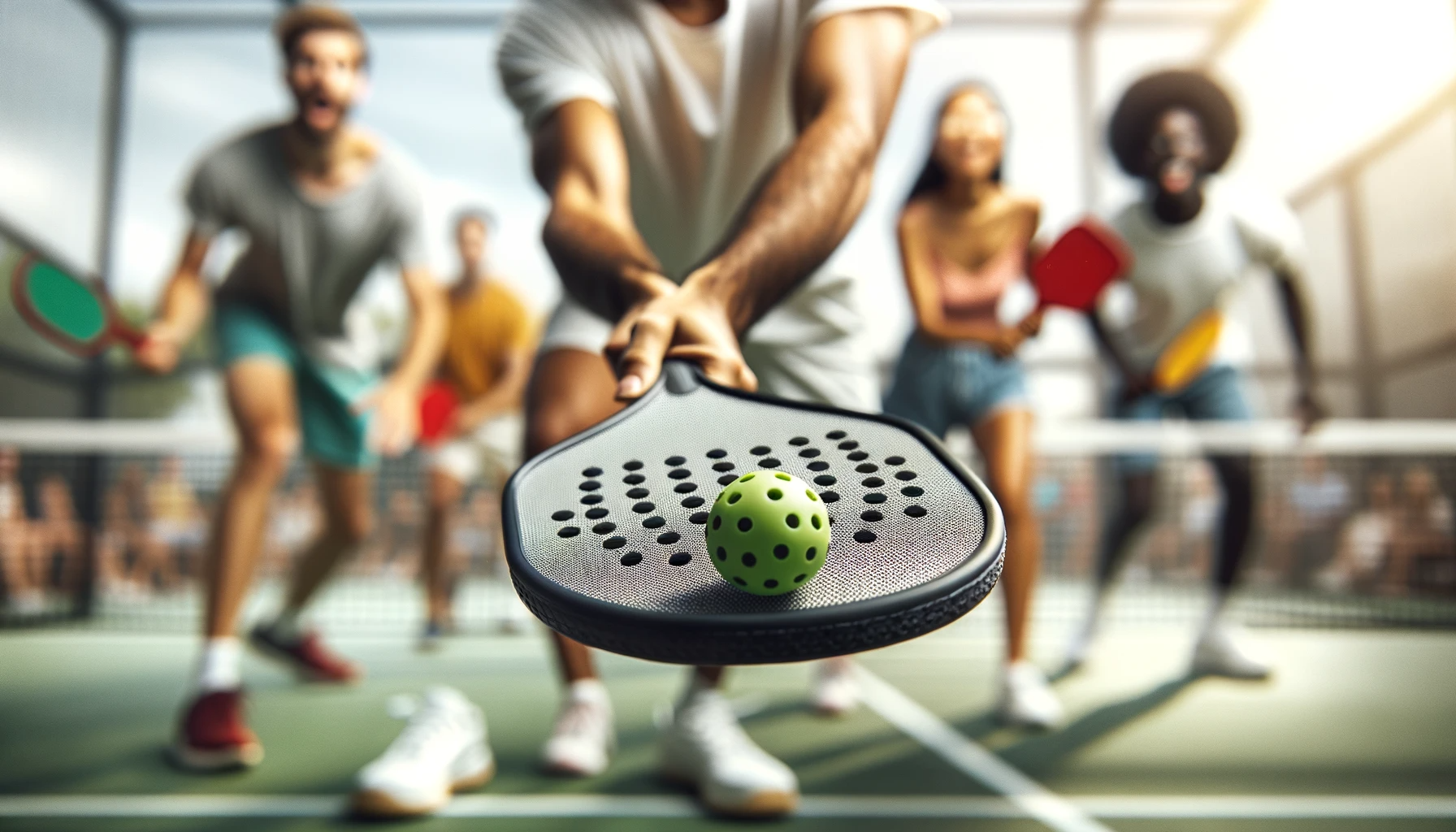
The Evolution of Pickleball Court Design
Pickleball is a popular sport that has been gaining traction in recent years, with an estimated 3.3 million players in the United States alone. As the sport continues to grow, so does the evolution of pickleball court design. From its humble beginnings on a badminton court to the development of dedicated pickleball courts, the design of the playing surface has undergone significant changes. In this article, we will explore the history and evolution of pickleball court design, and how it has impacted the game and its players.
Future Trends in Pickleball Court Design: What's Next for the Sport?
Pickleball has been gaining popularity in recent years, with more and more people picking up a paddle and hitting the court. As the sport continues to grow, so does the evolution of pickleball court design. From its humble beginnings on a badminton court to the standardized courts we see today, pickleball court design has come a long way. But what does the future hold for this beloved sport? Let's take a look at some potential trends in pickleball court design.
One of the most significant changes we may see in the future is the incorporation of technology into pickleball court design. With the rise of smart technology, it's not hard to imagine a court equipped with sensors and cameras to track the speed and trajectory of the ball. This could provide players with real-time data and analysis of their shots, allowing them to improve their game. It could also add an element of excitement and competitiveness to the sport, as players strive to beat their personal bests and compete against others.
Another trend that may emerge is the use of sustainable materials in court construction. As the world becomes more environmentally conscious, it's likely that pickleball courts will follow suit. We may see courts made from recycled materials or designed to be more energy-efficient. This not only benefits the environment but also reduces the cost of maintenance for court owners. Additionally, sustainable materials could potentially improve the playing surface, making it more durable and providing better ball bounce.
In terms of court size, there has been some debate about whether pickleball courts should be enlarged to accommodate more players. Currently, most courts are designed for doubles play, but with the increasing popularity of the sport, there may be a need for larger courts to accommodate more players. However, this could also change the dynamics of the game, as players would have more space to cover, and rallies may become longer. It will be interesting to see how this potential trend plays out in the future.
Another aspect of pickleball court design that may see some changes is the surface. Currently, most courts are made of concrete or asphalt, but there has been a growing interest in alternative surfaces. Some players prefer a softer surface, such as clay or grass, which can be easier on the joints. Others argue that a harder surface provides better ball bounce and faster gameplay. As the sport continues to evolve, we may see a variety of surfaces being used, catering to different playing styles and preferences.
One trend that has already emerged in some areas is the use of indoor pickleball courts. With the unpredictable weather in some regions, indoor courts provide a more consistent playing experience. They also allow for year-round play, which is especially beneficial for those living in colder climates. As the demand for indoor courts increases, we may see more facilities being built specifically for pickleball, with state-of-the-art amenities and features.
Finally, the future of pickleball court design may also see a focus on inclusivity and accessibility. As the sport becomes more popular, it's essential to ensure that everyone has the opportunity to play. This could mean designing courts with wheelchair access or creating modified versions of the game for those with physical limitations. It's crucial for the sport to continue to be inclusive and welcoming to players of all ages and abilities.
In conclusion, the evolution of pickleball court design is an exciting and ongoing process. With the sport's growing popularity, we can expect to see more changes and innovations in the future. From incorporating technology to using sustainable materials, the possibilities are endless. As players and fans of the sport, we can look forward to seeing how these trends shape the future of pickleball court design.
The Influence of Pickleball Court Design on Tournament Play
Pickleball has been gaining popularity in recent years, with more and more people picking up a paddle and hitting the court. As the sport continues to grow, so does the evolution of pickleball court design. From the early days of using makeshift courts to the standardized courts we see today, the design of pickleball courts has had a significant impact on tournament play.
In the early days of pickleball, players would often use existing tennis or badminton courts to play the game. This meant that the dimensions of the court were not specifically designed for pickleball, leading to some challenges for players. The smaller court size of tennis courts meant that players had less space to move around, making it difficult to cover the entire court. Additionally, the lines on the court were not designed for pickleball, leading to confusion and disputes during gameplay.
As the sport grew in popularity, the need for dedicated pickleball courts became apparent. The first official pickleball court was designed in 1976 by Joel Pritchard, one of the co-founders of the sport. This court had a dimension of 20 feet by 44 feet, with a non-volley zone (NVZ) or "kitchen" area of 7 feet on either side of the net. This design was a significant improvement from using existing courts, as it provided players with a designated space to play the game.
However, as the sport continued to grow, it became clear that the original court design had some limitations. The 7-foot NVZ was often too small for players to effectively play in, leading to many foot faults and injuries. This led to the development of the extended NVZ, which increased the size to 14 feet. This change allowed players to have more room to move around and reduced the number of foot faults.
Another significant change in pickleball court design came with the introduction of the USAPA (USA Pickleball Association) in 2005. The USAPA created a set of rules and regulations for the sport, including specific court dimensions. The standard court size was increased to 22 feet by 44 feet, with an NVZ of 7 feet on either side of the net. This change was made to accommodate the growing number of players and to provide a more consistent playing experience across all tournaments.
In addition to the court size, the USAPA also introduced specific guidelines for the court surface. The surface should be made of a smooth, non-slip material, such as concrete or asphalt, to ensure player safety. The color of the court should also be a light, neutral color to provide contrast with the pickleball, making it easier for players to see during gameplay.
The evolution of pickleball court design has not only improved the playing experience for players but has also had a significant impact on tournament play. With standardized court dimensions and surface guidelines, players can now compete on a level playing field, regardless of where the tournament is held. This has also allowed for more accurate and fair officiating, as the court design is consistent across all tournaments.
In conclusion, the evolution of pickleball court design has come a long way since the early days of using makeshift courts. From the original court design by Joel Pritchard to the standardized courts we see today, the changes have greatly improved the playing experience for players and have had a significant impact on tournament play. As the sport continues to grow, we can expect to see further advancements in pickleball court design, making the game even more enjoyable for players of all levels.
Adapting Pickleball Courts for Wheelchair Accessibility
Pickleball has been gaining popularity in recent years, with more and more people picking up a paddle and hitting the court. This fast-paced and exciting sport combines elements of tennis, badminton, and ping pong, making it a favorite among players of all ages and skill levels. As the sport continues to grow, so does the need for accessible pickleball courts for players with disabilities. In this article, we will explore the evolution of pickleball court design and how it has adapted to accommodate wheelchair accessibility.
In the early days of pickleball, the court design was similar to that of a tennis court, with a net in the middle and boundaries marked by lines. However, as the sport gained popularity, players began to realize that the standard court size was too large for the slower-moving pickleball game. This led to the creation of the official pickleball court size, which is 20 feet wide and 44 feet long, with a net height of 36 inches at the sidelines and 34 inches at the center.
While this standard court size was a step in the right direction, it still presented challenges for players with disabilities, particularly those in wheelchairs. The traditional pickleball court has a hard surface, which can be difficult for wheelchair users to maneuver on. Additionally, the boundaries of the court are marked by lines, which can be hard for players with visual impairments to see.
To address these issues, pickleball court designers began to incorporate more accessible features into their designs. One of the most significant changes was the use of a softer surface, such as rubber or cushioned tiles, which provide better traction for wheelchair users. These surfaces also absorb shock, making it easier for players to move around the court without discomfort.
Another important aspect of wheelchair accessibility is the placement of the net. In traditional pickleball courts, the net is placed at a height of 36 inches at the sidelines and 34 inches at the center. However, for wheelchair players, this can be a barrier, as they may not be able to reach over the net to hit the ball. To address this issue, some courts have a lower net height of 34 inches at the sidelines and 32 inches at the center, making it easier for wheelchair players to participate in the game.
In addition to the physical aspects of the court, designers have also made changes to the way boundaries are marked. Instead of using lines, some courts now use raised edges or color-contrasting surfaces to indicate the boundaries. This makes it easier for players with visual impairments to see and stay within the court's boundaries.
One of the most significant advancements in pickleball court design for wheelchair accessibility is the creation of dedicated wheelchair pickleball courts. These courts are specifically designed for wheelchair players, with a larger playing area and a lower net height. They also have a ramp at one end, allowing players to easily enter and exit the court. These dedicated courts not only provide a more inclusive playing experience for wheelchair players but also allow them to compete against other wheelchair players on a level playing field.
In conclusion, the evolution of pickleball court design has come a long way in terms of wheelchair accessibility. From the standard court size to the surface material and net height, designers have made significant changes to make the sport more inclusive for players with disabilities. With the creation of dedicated wheelchair pickleball courts, players of all abilities can now enjoy the fast-paced and exciting game of pickleball. As the sport continues to grow, we can expect to see even more advancements in court design to make it accessible for all.
The Rise of Indoor Pickleball Courts and Their Design Considerations
Pickleball has been gaining popularity in recent years, with more and more people picking up a paddle and hitting the court. As the sport continues to grow, so does the need for proper court design. In the early days of pickleball, most games were played on outdoor tennis courts with makeshift lines and nets. However, as the sport evolved, so did the need for dedicated pickleball courts. This led to the rise of indoor pickleball courts and their unique design considerations.
One of the main reasons for the rise of indoor pickleball courts is the weather. Unlike other outdoor sports, pickleball can be played year-round, rain or shine. This makes it a popular choice for those looking for a consistent and reliable form of exercise. However, with the unpredictable weather, outdoor courts can become unplayable, leading to the need for indoor facilities.
Indoor pickleball courts also offer a more controlled environment for players. With no wind or sun to contend with, players can focus solely on their game without any external factors affecting their performance. This is especially important for competitive players who need to maintain a consistent level of play.
When it comes to designing indoor pickleball courts, there are a few key considerations that need to be taken into account. The first is the size of the court. While outdoor pickleball courts are typically the same size as a doubles tennis court, indoor courts can vary in size. This is due to the fact that indoor facilities often have limited space, and the court size needs to be adjusted accordingly. The standard size for an indoor pickleball court is 20 feet by 44 feet, which is slightly smaller than an outdoor court.
Another important consideration is the type of flooring used. Unlike outdoor courts, which are usually made of concrete or asphalt, indoor courts can be made of a variety of materials. The most common type of flooring used for indoor pickleball courts is a hard court surface, similar to what is used for basketball or volleyball. This type of surface provides good traction and allows for quick movements on the court. However, some facilities may opt for a rubberized surface, which offers more shock absorption and is easier on the joints.
In addition to the court size and flooring, lighting is also a crucial factor in indoor pickleball court design. Proper lighting is essential for players to see the ball clearly and make accurate shots. The lighting should be evenly distributed throughout the court, with no glare or shadows. LED lighting is the preferred choice for indoor pickleball courts as it provides bright, energy-efficient lighting that can be easily adjusted.
Another consideration for indoor pickleball court design is the placement of amenities. Unlike outdoor courts, which are often located in public parks, indoor facilities have the advantage of being able to provide amenities such as restrooms, water fountains, and seating areas. These amenities not only add to the overall comfort of players but also make the facility more welcoming and accessible to a wider range of players.
In conclusion, the rise of indoor pickleball courts has brought about a new era of court design. With considerations such as court size, flooring, lighting, and amenities, these facilities offer a more controlled and comfortable environment for players to enjoy the sport year-round. As pickleball continues to grow in popularity, we can expect to see even more innovative and advanced designs for indoor courts in the future.
Innovative Court Features: Lighting, Fencing, and More
Pickleball has been gaining popularity in recent years, with more and more people picking up a paddle and hitting the court. As the sport continues to grow, so does the evolution of pickleball court design. From lighting to fencing, innovative features are being incorporated into pickleball courts to enhance the playing experience for players of all levels.
One of the most significant changes in pickleball court design is the incorporation of lighting. In the early days of the sport, pickleball was primarily played during the day, limiting the playing time for many players. However, with the introduction of LED lighting technology, pickleball courts can now be lit up for night play. This has opened up a whole new world for pickleball enthusiasts, allowing them to play at any time of day, regardless of the weather or season.
But it's not just about playing at night; the quality of lighting has also improved significantly. LED lights provide a brighter and more even distribution of light, eliminating any dark spots on the court. This not only improves visibility for players but also enhances safety, reducing the risk of injuries due to poor lighting. Additionally, LED lights are energy-efficient, making them a more sustainable option for pickleball court lighting.
Another innovative feature that has been incorporated into pickleball court design is fencing. Traditionally, pickleball courts were enclosed with chain-link fencing, which served its purpose but lacked aesthetic appeal. However, with the rise in popularity of the sport, more and more communities are investing in dedicated pickleball courts, and with that comes the opportunity for more aesthetically pleasing fencing options.
One popular fencing option for pickleball courts is vinyl-coated chain-link fencing. This type of fencing not only provides the necessary enclosure for the court but also adds a pop of color and a more polished look. Additionally, vinyl-coated fencing is more durable and requires less maintenance than traditional chain-link fencing, making it a practical choice for pickleball courts.
But it's not just about aesthetics; safety is also a crucial factor when it comes to fencing. Many pickleball courts now incorporate a lower fence height, typically around 3 feet, to allow for better visibility and communication between players on adjacent courts. This not only improves the playing experience but also reduces the risk of accidents and injuries.
In addition to lighting and fencing, other innovative features are being incorporated into pickleball court design to enhance the playing experience. One such feature is the use of color-coated court surfaces. Traditionally, pickleball courts were painted in a single color, usually green or blue. However, with the introduction of color-coated surfaces, players now have the option to play on courts with vibrant and eye-catching colors, making the game even more enjoyable.
Another innovative feature that has been gaining popularity is the use of cushioned court surfaces. These surfaces provide a softer and more forgiving playing surface, reducing the impact on players' joints and muscles. This is especially beneficial for older players or those with existing injuries, allowing them to continue playing without putting too much strain on their bodies.
In conclusion, the evolution of pickleball court design has brought about many innovative features that have enhanced the playing experience for players of all levels. From improved lighting and fencing to color-coated and cushioned court surfaces, these features not only make the game more enjoyable but also promote safety and sustainability. As the sport continues to grow, we can expect to see even more innovative features incorporated into pickleball court design, making it an even more exciting and accessible sport for all.
The Evolution of Court Dimensions: From Original to Standardized Size
Pickleball has been gaining popularity in recent years, with more and more people picking up a paddle and hitting the court. But what many may not know is that the game has undergone significant changes since its inception, including the evolution of court dimensions. From its original size to the standardized dimensions used today, let's take a closer look at the evolution of pickleball court design.
When pickleball was first invented in 1965 by Joel Pritchard, Bill Bell, and Barney McCallum, the game was played on a badminton court. The dimensions of a badminton court are 20 feet wide and 44 feet long, with a net height of 5 feet in the center. This meant that the original pickleball court was also 20 feet wide and 44 feet long, with a net height of 36 inches at the sidelines and 34 inches in the center.
As the game grew in popularity, players began to realize that the original court size was too large for the slower-paced game of pickleball. In 1976, the USAPA (USA Pickleball Association) was formed, and they made the first official changes to the court dimensions. The width of the court was reduced from 20 feet to 10 feet, making it easier for players to cover the court and increasing the speed of the game. The length of the court remained the same at 44 feet, and the net height was also lowered to 34 inches at the sidelines and 36 inches in the center.
However, even with these changes, players still felt that the court was too large, and rallies were too short. In 1984, the USAPA made further adjustments to the court dimensions, reducing the length from 44 feet to 20 feet. This change made the court a perfect square, with a width and length of 20 feet each. The net height was also lowered to 34 inches at the sidelines and 36 inches in the center, making it easier for players to hit overhead shots.
But the evolution of court dimensions didn't stop there. In 2008, the USAPA made the final changes to the court dimensions, creating the standardized size that is used today. The width of the court was increased from 10 feet to 22 feet, and the length was increased from 20 feet to 44 feet. The net height was also raised to 36 inches at the sidelines and 34 inches in the center, making it easier for players to hit groundstrokes and creating a more balanced game.
So why did the USAPA decide on these specific dimensions? The answer lies in the game itself. Pickleball is a unique sport that combines elements of tennis, badminton, and ping pong. The court dimensions were carefully chosen to create a balance between these three sports, making pickleball a game that is both challenging and enjoyable for players of all ages and skill levels.
The wider court allows for more movement and strategy, similar to tennis. The longer court creates longer rallies, similar to badminton. And the lower net height allows for more dinking and drop shots, similar to ping pong. These dimensions also make the game more accessible for players with different abilities, as the larger court allows for more time to reach shots and the lower net height makes it easier to hit the ball over.
In conclusion, the evolution of pickleball court dimensions has been a gradual process, with each change carefully considered to improve the game. From the original badminton court size to the standardized dimensions used today, the changes have made pickleball a more dynamic and enjoyable sport for players of all ages and skill levels. So next time you step onto the court, take a moment to appreciate the evolution of pickleball court design and how it has shaped the game we know and love today.
The Impact of Court Surface Material on Pickleball Gameplay
Pickleball has been gaining popularity in recent years, with more and more people picking up a paddle and hitting the court. As the sport continues to grow, so does the evolution of pickleball court design. From the size and layout of the court to the materials used for the surface, every aspect of the court has been carefully considered to enhance the gameplay experience. In this article, we will explore the impact of court surface material on pickleball gameplay.
When pickleball was first invented in 1965, the game was played on a badminton court with a modified net and paddles. As the sport gained traction, dedicated pickleball courts were built, and the standard court size was established at 20 feet by 44 feet. However, the surface material of these early courts was often overlooked, with many courts being made of concrete or asphalt.
As the popularity of pickleball grew, players began to realize the importance of court surface material on gameplay. Concrete and asphalt courts were hard and unforgiving, causing players to experience more strain on their joints and muscles. The ball also bounced differently on these surfaces, making it challenging to control and predict its trajectory. This led to the development of specialized pickleball court surfaces.
One of the most popular court surface materials for pickleball is acrylic. Acrylic courts are made of a mixture of sand, rubber, and acrylic resins, creating a smooth and durable surface. The texture of the court allows for consistent ball bounce, making it easier for players to anticipate and react to shots. The cushioned surface also reduces the impact on players' joints, making it a more comfortable playing experience.
Another popular court surface material is polypropylene. This material is often used for outdoor pickleball courts as it is weather-resistant and can withstand harsh elements. Polypropylene courts have a textured surface, providing players with better traction and grip. The ball also bounces consistently on this surface, making it easier to control and maneuver.
In recent years, there has been a rise in the use of rubberized court surfaces for pickleball. These surfaces are made of a combination of rubber and polyurethane, creating a softer and more forgiving playing surface. The rubberized surface also provides excellent shock absorption, reducing the strain on players' bodies. This type of court is often preferred by older players or those with joint issues.
The type of court surface material used can also affect the speed of the game. For example, concrete and asphalt courts are faster, with the ball bouncing higher and traveling at a quicker pace. On the other hand, acrylic and rubberized courts are slower, with the ball bouncing lower and at a slower speed. This can impact the strategy and style of play for different players, making it essential to choose the right court surface for a particular game.
Aside from the material used, the texture of the court surface also plays a significant role in pickleball gameplay. A smooth surface allows for a faster game, with the ball gliding effortlessly across the court. On the other hand, a textured surface provides more grip and control, making it easier to place shots and add spin to the ball.
In conclusion, the evolution of pickleball court design has led to a better understanding of the impact of court surface material on gameplay. From the early days of playing on concrete and asphalt to the development of specialized surfaces like acrylic, polypropylene, and rubberized courts, the game has evolved to provide a more comfortable and enjoyable experience for players. As the sport continues to grow, we can expect to see further advancements in court surface materials, enhancing the gameplay experience for pickleball enthusiasts worldwide.
The History of Pickleball Court Design: From Tennis Courts to Dedicated Spaces
Pickleball has been gaining popularity in recent years, with more and more people picking up a paddle and hitting the court. But have you ever stopped to think about the design of the pickleball court? How did it come to be the way it is today? In this article, we will take a trip down memory lane and explore the evolution of pickleball court design.
The origins of pickleball can be traced back to 1965, when it was invented by three friends on Bainbridge Island, Washington. The game was initially played on a badminton court, with a lowered net and handmade paddles. As the game gained popularity, players started to look for dedicated spaces to play, rather than using existing courts.
In the early days, pickleball was often played on tennis courts. The smaller size of the pickleball court made it a perfect fit on a tennis court, with the net being lowered to 34 inches in the center. This allowed for a faster-paced game and made it easier for players to cover the court. However, playing on a tennis court also had its drawbacks. The lines and markings on a tennis court were not designed for pickleball, which led to confusion and disputes during games.
As pickleball continued to grow in popularity, dedicated spaces for the game started to emerge. In the 1980s, the first dedicated pickleball courts were built in Sun City, Arizona. These courts were specifically designed for pickleball, with the correct dimensions and markings. This allowed for a smoother and more enjoyable playing experience for players.
With the rise of dedicated pickleball courts, the need for standardized court dimensions became apparent. In 1984, the USAPA (USA Pickleball Association) was formed and they established the official court dimensions of 20 feet by 44 feet. This was a significant moment in the evolution of pickleball court design, as it provided a consistent playing experience for players across the country.
In the early 2000s, the popularity of pickleball exploded, and with it came the need for more courts. As a result, many parks and recreation departments started to convert existing tennis courts into pickleball courts. This was a cost-effective solution, as it required minimal changes to the court surface and net height. However, this also led to some challenges, as the lines and markings on a tennis court were still not ideal for pickleball.
To address this issue, the USAPA introduced a new court design in 2008. This design featured a larger non-volley zone (also known as the kitchen) and a revised service area. The new design also included a 7-foot no-volley zone on either side of the net, which helped to reduce the number of disputes during games. This design is now the standard for all new pickleball court constructions.
In recent years, there has been a push for dedicated pickleball courts to have a cushioned surface. This is to reduce the impact on players' joints and provide a more comfortable playing experience. Some dedicated pickleball courts now feature a rubberized surface, similar to that of a tennis court, while others have a specialized pickleball court surface.
In conclusion, the evolution of pickleball court design has come a long way since its humble beginnings on a badminton court. From playing on tennis courts to dedicated spaces, and from non-standardized dimensions to a consistent court size, the game has evolved to provide a better playing experience for all. As pickleball continues to grow in popularity, we can only imagine what the future holds for the design of pickleball courts.
Conclusion
In conclusion, the evolution of pickleball court design has greatly impacted the sport and its players. From the original makeshift courts to the standardized dimensions and materials used today, the changes have improved the overall playing experience and allowed for more competitive gameplay. The incorporation of different court surfaces and the addition of dedicated pickleball courts have also contributed to the growth and popularity of the sport. As pickleball continues to gain recognition and attract players of all ages, it is likely that we will see further advancements and innovations in court design in the future.


